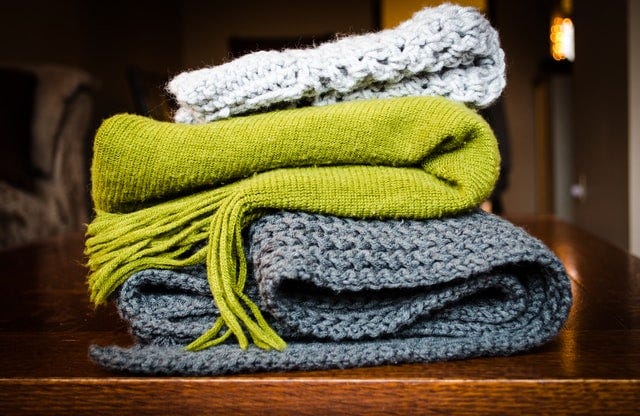Jeju near the end of winter
Oh Gown-seok of The Shilla Jeju knows the best activities and places
The season isn’t over – at least not in Jeju Island in Korea. Winter’s expected to last till March; so if you want to chase what remains of the relative cold – and everything else it has to offer – then there’s still time.
We say “relative” because if it’s your first trip to the island, here’s one piece of information you might like to know: “It’s warmer here than in other parts of Korea because of its geographical location, which is towards the south of the Korean peninsula,” says Oh Gown-seok, The Shilla Jeju’s G.A.O. Representative. (G.A.O. stands for Guest Activity Organiser.) Temperatures don’t usually go below zero.

But that could be a plus, as it would simply mean you’d have more to see and do. Jeju is a UNESCO World Heritage Site after all, with nature trails, lava tubes and rock formations, so there’s bound to be a lot of amazing attractions to cover. And we can rely on Gown-seok to show us the way.
We ask for Gown-seok’s favourite winter…
Activities: Climbing Mount Hallasan and picking fruit
“When covered in snow, Mount Hallasan is typical of winter in Jeju. If the snowy mountain’s seen on TV, people from around the country will probably descend on the island. Hallasan Snowflake Trekking, a G.A.O. winter programme of The Shilla Jeju, has been highly rated for customer satisfaction.
“Jeju’s citrus fruits include nojigyul, hallabong, cheonhyehyang and redhyang; they’re harvested from November through February. Until the early ‘80s, these fruits were so precious that they were called ‘daehak namu’ (literally meaning ‘university trees’, the very best). From December to February, The Shilla Jeju G.A.O. offers an opportunity to ‘pick fruit’ in greenhouses.”
Drinks: Hallabong juice and hallabong frappe
“The juice is made with the winter fruit, Jeju hallabong, and the frappe is made from The Shilla Jeju’s own special recipe. Only the best, ripe hallabong fruit are used for them.
“For the hallabong frappe, iced milk and hallabong purée are added to flavour the drink, and the fruit’s flesh is used as decoration. The hallabong frappe is available with hallabong purée and hallabong sherbet at the hotel’s lobby lounge, Badang. The citrusy flavours are a surprising winter treat, as the fruits are in season.”
Places to appreciate nature: Oreum and Gotjawal
“They're popular throughout the year. Their volcanic landforms, which are unique to Jeju, make them some of the most beautiful yet accessible places to enjoy trekking, especially in winter.”
Food: Jjamppong
“The spicy seafood noodle soup with abalone and beef brisket is a favourite. Also nicknamed the ‘jjamppong of life’, it is a luscious combination of beef brisket and locally sourced fresh seafood such as dried cuttlefish, snow crab, abalone and jumbo shrimp. The Shilla Jeju’s jjamppong, with its refreshing taste, is a signature menu item of the hotel.”
Time of the day: 10am
“I think the best time to embark on activities under the G.A.O. programme is after breakfast.”
Views: Snowy Mount Hallasan and the evergreen Gotjawal Forest
“Mount Hallasan is a symbol of Jeju. The mountain looks majestic from all sides, more so in winter when it’s covered in snow. Mount Hallasan is like a mother to the local residents of Jeju, so they claim their own villages have the most beautiful views of the mountain.
“Gotjawal’s forest areas are volcanic landforms unique to Jeju, where you can enjoy lush, green trees even in winter. Gotjawal’s forests are also repositories of pteridophytes, where trees and shrubs grow on cracked rocks. The evergreen forests used to be viewed as wasted land, or land that could not be farmed, but now they’re treasures of infinite value.”
Way to keep warm: Exercise
“I try to build up my physical fitness through regular exercise (for example, fitness and outdoor activities). It’s a great way to beat the cold.”
Things to do early in the morning, and late at night: Walking in the gardens and observing the stars
“The Shilla Jeju is situated against a backdrop of gorgeous coastal scenery, and you can start the day by strolling along the walkways in the morning.
“The winter night sky is also a great gift for me. Winter nights are the perfect time to observe the stars. Almost every day in Soombi Garden, I enjoy the stars in the night sky including the Milky Way, nebulae and other clusters. Canopus is observed only at Seogwipo and Jungmun in Jeju. You can see the stars clearly through a telescope.”
Places to socialise and catch up with friends, or see the sights: Seaside cafés and camellia habitats
“It’s safe to say that Jeju Island is a paradise of cafés. You can find trendy cafés near the coastal roads or bathing beaches, and they provide a casual, convivial atmosphere to socialise with friends.
“Wimi Camellia Community (aka Jeju Camellia Arboretum) and Camellia Hill are wonderful places to visit with friends, or to get a sense of the island’s aura. The habit of planting camellias as shelterbelts from old times have recently become popular tourist destinations.”
If you also like to gaze out at the water, The Shilla Jeju is located on Jungmun beach. They have heated pools too. And with the G.A.O.'s help, you can also go hiking or on a sunset cruise, and have other things in your itinerary customised. Go to their site for more information or current packages and offers, like the “Sweet Dream in Jeju”.
Later, you can just put your feet up and have a nice hot drink in your cosy room. Because in the end, that’s what a winter escape is all about.







